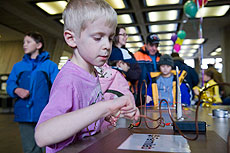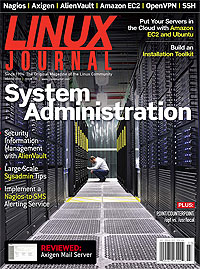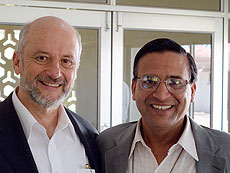|
Have a safe day!
Tuesday, Feb. 2
3:30 p.m.
DIRECTOR'S COFFEE BREAK - 2nd floor X-over
4 p.m.
Accelerator Physics and Technology Seminar - One West
Speaker: Dmitri Denisov, Fermilab
Title: Tevatron Program - Status and Future Prospects
Wednesday, Feb. 3
3:30 p.m.
DIRECTOR'S COFFEE BREAK - 2nd Flr X-Over
THERE WILL BE NO FERMILAB COLLOQUIUM THIS WEEK
Click here for NALCAL,
a weekly calendar with links to additional information.
Upcoming conferences |
|
|
For information about H1N1, visit Fermilab's flu information site.
|
|
Tuesday, Feb. 2
- Breakfast: Bagel sandwich
- Tomato Bisque Soup
- Lemon pepper club
- Beef fajitas
- Korean garlic chicken
- Grilled chicken Caesar salad
- Assorted sliced pizza
- Rio Grande taco salad
Wilson Hall Cafe Menu
|
|
Wednesday, Feb. 3
Lunch
- Broiled tilapia with Thai coconut curry sauce
- Tri-colored peppers
- Pineapple upside-down cake
Thursday, Feb. 4
Dinner
- Shrimp cocktail
- Glazed filet mignon with bourbon-roquefort sauce
- Two-potato cake
- Steamed green beans
- Poached pears with chocolate pear sauce
Chez Leon Menu
Call x3524 to make your reservation.
|
|
|
Discover physics fun at Fermilab's Open House
 |
| Children got an up-close look at physics in action at last year's open house. |
Unlocking the secrets of the universe doesn't have to be a solemn affair. The annual Fermilab Education Open House, happening Sunday, Feb. 21, from 1-5.p.m. even involves confetti. This year's line-up will help children and their parents celebrate the fun side of physics through demonstrations, interactive activities and behind-the-scenes tours.
Jerry Zimmerman's beloved alter ego, Mr. Freeze, will be back to wow the crowds with his unique blend of comedy and science, demonstrating the wonders of liquid nitrogen. In addition to presentations on the physics of light and talks in the Art Gallery, attendees can take in David Schmitz and Michael Cooke's show of gravity-defying physics experiments using spinning bicycle wheels and homemade electromagnets.
For those who aren't satisfied to merely sit back and watch, Wilson Hall's atrium is hosting hands-on projects that bring particle physics' abstract ideas down to a level that kids can see and touch.
If all the excitement leaves you wondering about the search for the Higgs boson, or why the heck dark matter really matters, head up to the 15th floor, where more than a dozen physicists will be waiting to answer any questions. Once you've satisfied your curiosity, sit back and enjoy the bird's-eye view of the Tevatron. You won't see any particle collisions, but if you look hard enough you might see some of the laboratory's bison from up there.
This free event is recommended for ages 8 and older, and is sponsored in part by the Fermilab Friends for Science Education, a non-profit organization that supports the work of the Education Office. You must register in advance. Please visit the Open House Web page to sign up. If you have further questions, please e-mail or call Nancy Lanning at (630) 840-5588.
-- Andrea Mustain
|
Service Desk survey
Editor's note: This announcement originally appeared in CD Tracks, Fermilab's Computing Division Newsletter.
Let your voice be heard-and maybe win a free lunch! The Fermilab Service Desk is conducting a Customer Satisfaction survey, which will be open until Saturday, Feb. 14.
The survey will assess your Service Desk experience from September to December 2009, and a follow-up survey will take place this summer. At the bottom of the survey, you may enter a drawing for free lunch for the winner and a guest at Chez Leon!
|
Linux magazine highlights Fermilab's GCC
 |
| Fermilab Computing Division employee Jason Allen and Fermilab's Grid Computing Center are featured on the cover of LINUX Journal, shown above. Allen, the head of the Linux Administration Department at Fermilab, is the author of the magazine's cover story about large scale linux system administration. |
|
Top notch camera tech
From Attack of the Show, Jan. 28, 2010
Editor's note: Attack This, a segment of G4TV's Attack of the Show, a technology trends program showcasing viral videos, comics, movies gadgets and more, highlighted the Dark Energy Camera (DECam) experiment. The segment about DECam starts about 1:20 into the video.
There's more to life than snapping photographs. Olivia Munn has the latest camera toys and add-ons to make photography more fun than ever, like the Steadicam Smoothee for the iPhone 3GS, the redesigned Polaroid Pic-1000 for instant photos, the first DXG 3D camcorder and more.
Read more
|
Supercomputer shares universe simulations
From MSNBC, Jan. 29, 2010
Fully-rendered simulation streaming online allows scientists to collaborate
Supercomputing has helped astrophysicists create massive models of the universe, but such simulations remain out of reach for many in the United States and around the world. That could all change after a successful test allowed scientists in Portland, Ore. to watch a Chicago-based simulation of how ordinary matter and mysterious dark matter evolved in the early universe.
The streaming event also took place in real-time, which means that teams in both Chicago and Portland could have theoretically played together in the simulation as easily as PC or console video gamers play together in online games.
The demo goes far beyond entertaining people with pretty 3-D journeys through the early universe. Only supercomputers can handle the huge amounts of data that make up the most sophisticated astrophysics models, and scientists can't always travel to places with supercomputing clusters to do their research. Having the ability to stream a fully-rendered simulation online allows scientists to collaborate on research remotely and overcome the barriers of limited access to supercomputers.
Read more
|
|
|
Visit to India: Part II
 |
| Fermilab Director Oddone and distinguished laser-plasma physicist Dr. P.D. Gupta, Director of the Raja Ramanna Center for Advanced Technology in Indore, India. |
The Mumbai metropolitan area is the largest financial, industrial and commercial area in India, with more than 20 million inhabitants. Mumbai is also home to two of India's premier physics institutions: the Tata Institute of Fundamental Research, TIFR, and the Bhabha Atomic Research Center, BARC. While in Mumbai we had the opportunity to meet with Dr. Anil Kakodkar, former secretary of the Department of Atomic Energy, the DAE, and Dr. Srikumar Banerjee, the current secretary of DAE and director of BARC.
The meeting of the Funding Agencies for Large Colliders, FALC, took place at TIFR. Recently, FALC invited one director from the Americas region, me, and one director from Asian region, Atsuto Suzuki of KEK, to become members. The CERN director has been a member of FALC since its inception, as the representative of the small countries of Europe. These FALC meetings take place twice a year. The agencies inform each other on the state of particle physics in their respective countries and discuss how to coordinate their support of global projects. Even today the definition of global projects that require coordination by FALC is under discussion.
At this stage, the only project on the horizon that is universally recognized as a global project is the International Linear Collider-generally the main subject of discussions for FALC meetings. Recently some European colleagues have proposed considering the upgrade of the LHC as a global project. The discussion on that issue has only started.
BARC is an impressive laboratory with 16,000 staff members, the principal laboratory for the development of all things nuclear in India. In addition to its reactors and scientific research and fabrication facilities, the laboratory has staff housing, as well as schools, amenities and medical facilities. Very importantly, it provides focused training after a university degree to train scientists and engineers for the laboratory. It is a very desirable career path, accepting only one or two percent of prospective students. Every scientist and engineer that graduates is known for the "batch" in which he or she graduated, even to the rank within the "batch." Many of the leaders of the DAE have come through this schooling.
After visiting the laboratories in Mumbai, we visited the Raja Ramanna Center for Advanced Technology, RRCAT, a modern multiprogram laboratory on a beautiful site in Indore. It has two synchrotron light sources. Indus 2 is a 2.5 GeV synchrotron and the premier facility at the laboratory. RRCAT is a principal collaborator in the development of superconducting RF technology. This was my third visit to RRCAT, and every time I come the laboratory has new buildings. I counted at least six under construction including one devoted entirely to SCRF that will house all the SCRF facilities: cleaning, assembly and testing.
The laboratories in India feel quite familiar to a visitor from a U.S. laboratory. Either national laboratories develop naturally to a certain pattern, or India has followed the pattern pioneered in the U.S. Every laboratory that we visited prominently honored the great Indian physicist and atomic energy pioneer Homi Bhabha. There are some striking characteristics of the Indian scientific enterprise: the public acceptance of nuclear energy; the apparent delegation of the task of setting the direction of development to the highly capable technical and scientific leadership at the DEA; growth and stability provided by five year plans; and advances that are not limited by funding but by the development of a technical workforce. The world is indeed on the way to becoming flat.
|
|